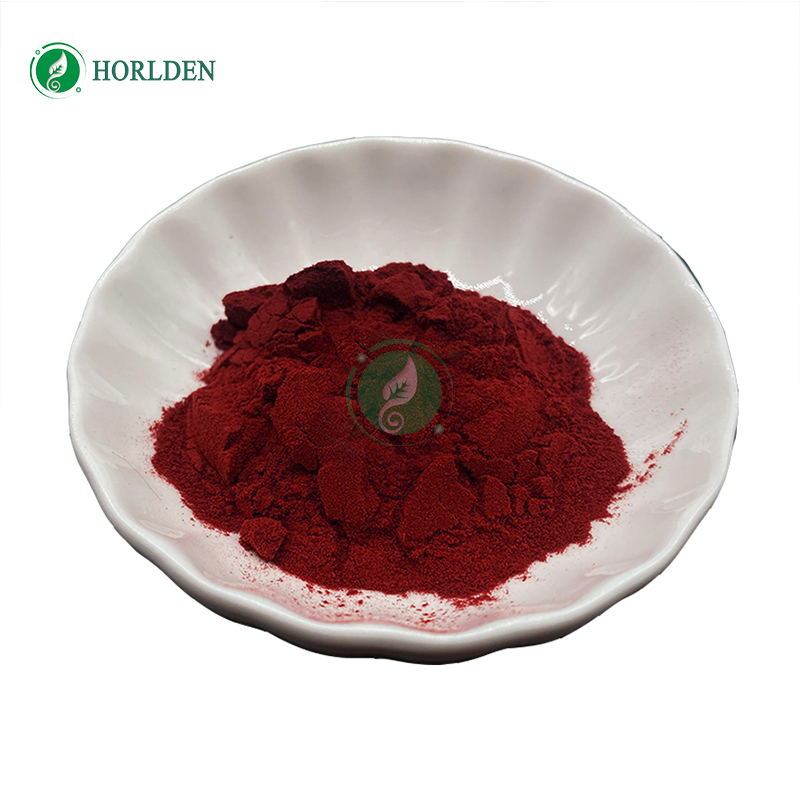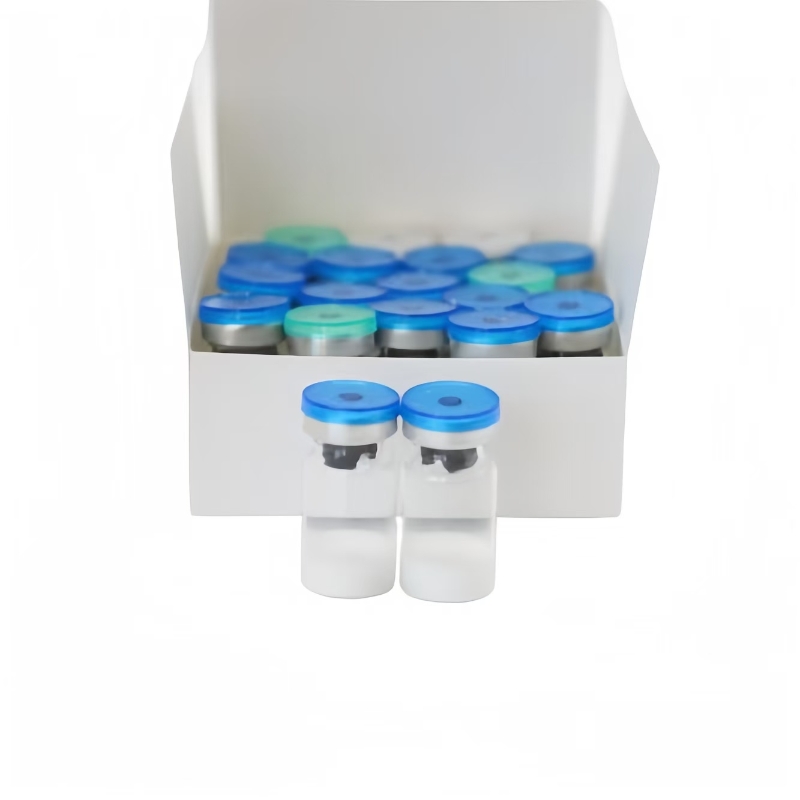-
Categories
-
Pharmaceutical Intermediates
-
Active Pharmaceutical Ingredients
-
Food Additives
- Industrial Coatings
- Agrochemicals
- Dyes and Pigments
- Surfactant
- Flavors and Fragrances
- Chemical Reagents
- Catalyst and Auxiliary
- Natural Products
- Inorganic Chemistry
-
Organic Chemistry
-
Biochemical Engineering
- Analytical Chemistry
-
Cosmetic Ingredient
- Water Treatment Chemical
-
Pharmaceutical Intermediates
Promotion
ECHEMI Mall
Wholesale
Weekly Price
Exhibition
News
-
Trade Service
A new study published online on the 4th in the British journal "Nature Biotechnology" shows that new optogenetic tools developed by Chinese researchers are making it possible for a beam of light to be used to treat tumors, metabolic diseases and many other diseases.
.
.
After the advent of optogenetics more than ten years ago, the field of neuroscience has begun to use this treatment method
.
In recent years, researchers have built a series of optogenetic tools through the mining and design of light-sensitive proteins and applied them to the treatment of tumors and metabolic diseases , which is of great significance in the fields of precise and controllable gene therapy and cell therapy.
, But there are still many problems that need to be overcome to truly realize the use of a beam of light to cure diseases
.
.
In recent years, researchers have built a series of optogenetic tools through the mining and design of light-sensitive proteins and applied them to the treatment of tumors and metabolic diseases , which is of great significance in the fields of precise and controllable gene therapy and cell therapy.
, But there are still many problems that need to be overcome to truly realize the use of a beam of light to cure diseases
.
In the latest research, researchers from the School of Life Sciences, East China Normal University, Shanghai Key Laboratory of Regulatory Biology, and East China Normal University Medical Synthetic Biology Research Center took 5 years to develop a new type of optogenetics with small modules and high sensitivity.
Learning tool-REDMAP system
.
Learning tool-REDMAP system
.
Studies have shown that the REDMAP system has good spectral specificity and a high degree of reversibility
.
The system also has ultra-high sensitivity.
It only needs to irradiate red light for 1 second to achieve a gene expression effect of more than 150 times
.
.
The system also has ultra-high sensitivity.
It only needs to irradiate red light for 1 second to achieve a gene expression effect of more than 150 times
.
According to reports, an ideal optogenetic tool that can be used in clinics needs to meet several characteristics: First, it responds to red light or far-red light, which has good tissue penetration and almost no phototoxicity, and has relatively high Good in vivo application potential; second, the system components are small, can be packaged by adeno-associated viruses with better safety, and can be widely used in gene therapy and basic medical research; third, the sensitivity is high, the light response speed is fast and can be turned off at any time, It has good reversibility and can be flexibly adjusted according to actual needs and application scenarios
.
However, none of the previous optogenetic tools can meet the above conditions at the same time
.
.
However, none of the previous optogenetic tools can meet the above conditions at the same time
.
The head of the research team, Ye Haifeng, told Xinhua News Agency reporters on the 4th: “The latest research result is an optogenetic tool that fully meets the above requirements.
Cell gene expression can also be used in many fields such as the control of cell signaling pathways, gene editing, and the treatment of diabetes
.
"
Cell gene expression can also be used in many fields such as the control of cell signaling pathways, gene editing, and the treatment of diabetes
.
"
A new study published online on the 4th in the British journal "Nature Biotechnology" shows that new optogenetic tools developed by Chinese researchers are making it possible for a beam of light to be used to treat tumors, metabolic diseases and many other diseases.
.
.
After the advent of optogenetics more than ten years ago, the field of neuroscience has begun to use this treatment method
.
In recent years, researchers have built a series of optogenetic tools through the mining and design of light-sensitive proteins and applied them to the treatment of tumors and metabolic diseases , which is of great significance in the fields of precise and controllable gene therapy and cell therapy.
, But there are still many problems that need to be overcome to truly realize the use of a beam of light to cure diseases
.
.
In recent years, researchers have built a series of optogenetic tools through the mining and design of light-sensitive proteins and applied them to the treatment of tumors and metabolic diseases , which is of great significance in the fields of precise and controllable gene therapy and cell therapy.
, But there are still many problems that need to be overcome to truly realize the use of a beam of light to cure diseases
.
In the latest research, researchers from the School of Life Sciences, East China Normal University, Shanghai Key Laboratory of Regulatory Biology, and East China Normal University Medical Synthetic Biology Research Center took 5 years to develop a new type of optogenetics with small modules and high sensitivity.
Learning tool-REDMAP system
.
Learning tool-REDMAP system
.
Studies have shown that the REDMAP system has good spectral specificity and a high degree of reversibility
.
The system also has ultra-high sensitivity.
It only needs to irradiate red light for 1 second to achieve a gene expression effect of more than 150 times
.
.
The system also has ultra-high sensitivity.
It only needs to irradiate red light for 1 second to achieve a gene expression effect of more than 150 times
.
According to reports, an ideal optogenetic tool that can be used in clinics needs to meet several characteristics: First, it responds to red light or far-red light, which has good tissue penetration and almost no phototoxicity, and has relatively high Good in vivo application potential; second, the system components are small, can be packaged by adeno-associated viruses with better safety, and can be widely used in gene therapy and basic medical research; third, the sensitivity is high, the light response speed is fast and can be turned off at any time, It has good reversibility and can be flexibly adjusted according to actual needs and application scenarios
.
However, none of the previous optogenetic tools can meet the above conditions at the same time
.
.
However, none of the previous optogenetic tools can meet the above conditions at the same time
.
The head of the research team, Ye Haifeng, told Xinhua News Agency reporters on the 4th: “The latest research result is an optogenetic tool that fully meets the above requirements.
Cell gene expression can also be used in many fields such as the control of cell signaling pathways, gene editing, and the treatment of diabetes
.
"
Cell gene expression can also be used in many fields such as the control of cell signaling pathways, gene editing, and the treatment of diabetes
.
"
A new study published online on the 4th in the British journal "Nature Biotechnology" shows that new optogenetic tools developed by Chinese researchers are making it possible for a beam of light to be used to treat tumors, metabolic diseases and many other diseases.
.
.
After the advent of optogenetics more than ten years ago, the field of neuroscience has begun to use this treatment method
.
In recent years, researchers have built a series of optogenetic tools through the mining and design of light-sensitive proteins and applied them to the treatment of tumors and metabolic diseases , which is of great significance in the fields of precise and controllable gene therapy and cell therapy.
, But there are still many problems that need to be overcome to truly realize the use of a beam of light to cure diseases
.
Tumor tumor tumor disease disease disease.
In recent years, researchers have built a series of optogenetic tools through the mining and design of light-sensitive proteins and applied them to the treatment of tumors and metabolic diseases , which is of great significance in the fields of precise and controllable gene therapy and cell therapy.
, But there are still many problems that need to be overcome to truly realize the use of a beam of light to cure diseases
.
In the latest research, researchers from the School of Life Sciences, East China Normal University, Shanghai Key Laboratory of Regulatory Biology, and East China Normal University Medical Synthetic Biology Research Center took 5 years to develop a new type of optogenetics with small modules and high sensitivity.
Learning tool-REDMAP system
.
Learning tool-REDMAP system
.
Studies have shown that the REDMAP system has good spectral specificity and a high degree of reversibility
.
The system also has ultra-high sensitivity.
It only needs to irradiate red light for 1 second to achieve a gene expression effect of more than 150 times
.
.
The system also has ultra-high sensitivity.
It only needs to irradiate red light for 1 second to achieve a gene expression effect of more than 150 times
.
According to reports, an ideal optogenetic tool that can be used in clinics needs to meet several characteristics: First, it responds to red light or far-red light, which has good tissue penetration and almost no phototoxicity, and has relatively high Good in vivo application potential; second, the system components are small, can be packaged by adeno-associated viruses with better safety, and can be widely used in gene therapy and basic medical research; third, the sensitivity is high, the light response speed is fast and can be turned off at any time, It has good reversibility and can be flexibly adjusted according to actual needs and application scenarios
.
However, none of the previous optogenetic tools can meet the above conditions at the same time
.
.
However, none of the previous optogenetic tools can meet the above conditions at the same time
.
The head of the research team, Ye Haifeng, told Xinhua News Agency reporters on the 4th: “The latest research result is an optogenetic tool that fully meets the above requirements.
Cell gene expression can also be used in many fields such as the control of cell signaling pathways, gene editing, and the treatment of diabetes
.
"
Cell gene expression can also be used in many fields such as the control of cell signaling pathways, gene editing, and the treatment of diabetes
.
"







